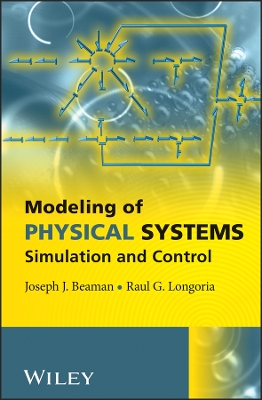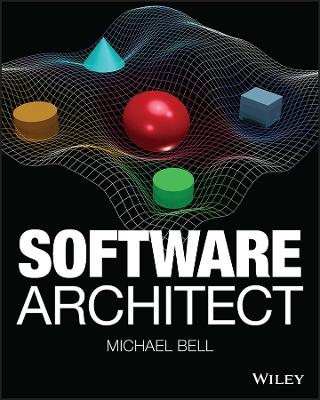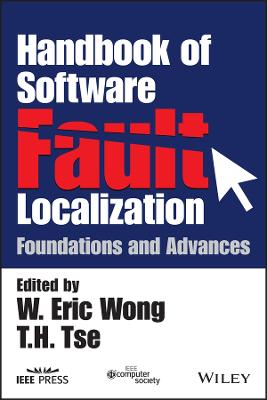Zeroing Neural Networks
 -15%
portes grátis
-15%
portes grátis
Zeroing Neural Networks
Finite-time Convergence Design, Analysis and Applications
Jia, Lei; Xiao, Lin
John Wiley & Sons Inc
11/2022
432
Dura
Inglês
9781119985990
15 a 20 dias
678
Descrição não disponível.
List of Figures xv
List of Tables xxxi
Author Biographies xxxiii
Preface xxxv
Acknowledgments xlv
Part I Application to Matrix Square Root 1
1 FTZNN for Time-varying Matrix Square Root 3
1.1 Introduction 3
1.2 Problem Formulation and ZNN Model 4
1.3 FTZNN Model 4
1.3.1 Model Design 5
1.3.2 Theoretical Analysis 7
1.4 Illustrative Verification 8
1.5 Chapter Summary 11
References 11
2 FTZNN for Static Matrix Square Root 13
2.1 Introduction 13
2.2 Solution Models 14
2.2.1 OZNN Model 14
2.2.2 FTZNN Model 15
2.3 Illustrative Verification 17
2.3.1 Example 1 18
2.3.2 Example 2 20
2.4 Chapter Summary 21
References 21
Part II Application to Matrix Inversion 23
3 Design Scheme I of FTZNN 25
3.1 Introduction 25
3.2 Problem Formulation and Preliminaries 25
3.3 FTZNN Model 26
3.3.1 Model Design 26
3.3.2 Theoretical Analysis 29
3.4 Illustrative Verification 30
3.4.1 Example 1: Nonrandom Time-varying Coefficients 30
3.4.2 Example 2: Random Time-varying Coefficients 34
3.5 Chapter Summary 35
References 36
4 Design Scheme II of FT ZNN 39
4.1 Introduction 39
4.2 Preliminaries 40
4.2.1 Mathematical Preparation 40
4.2.2 Problem Formulation 41
4.3 NT-FTZNN Model 41
4.4 Theoretical Analysis 43
4.4.1 NT-FTZNN in the Absence of Noises 43
4.4.2 NT-FTZNN in the Presence of Noises 44
4.5 Illustrative Verification 46
4.5.1 Example 1: Two-dimensional Coefficient 47
4.5.2 Example 2: Six-dimensional Coefficient 52
4.5.3 Example 3: Application to Mobile Manipulator 54
4.5.4 Example 4: Physical Comparative Experiments 54
4.6 Chapter Summary 57
References 57
5 Design Scheme III of FTZNN 61
5.1 Introduction 61
5.2 Problem Formulation and Neural Solver 61
5.2.1 FPZNN Model 62
5.2.2 IVP-FTZNN Model 63
5.3 Theoretical Analysis 64
5.4 Illustrative Verification 70
5.4.1 Example 1: Two-Dimensional Coefficient 70
5.4.2 Example 2: Three-Dimensional Coefficient 73
5.5 Chapter Summary 78
References 78
Part III Application to Linear Matrix Equation 81
6 Design Scheme I of FTZNN 83
6.1 Introduction 83
6.2 Convergence Speed and Robustness Co-design 84
6.3 R-FTZNN Model 90
6.3.1 Design of R-FTZNN 90
6.3.2 Analysis of R-FTZNN 91
6.4 Illustrative Verification 93
6.4.1 Numerical Example 93
6.4.2 Applications: Robotic Motion Tracking 98
6.5 Chapter Summary 101
References 102
7 Design Scheme II of FTZNN 105
7.1 Introduction 105
7.2 Problem Formulation 106
7.3 FTZNN Model 106
7.4 Theoretical Analysis 108
7.4.1 Convergence 108
7.4.2 Robustness 112
7.5 Illustrative Verification 118
7.5.1 Convergence 118
7.5.2 Robustness 121
7.6 Chapter Summary 122
References 122
Part IV Application to Optimization 125
8 FTZNN for Constrained Quadratic Programming 127
8.1 Introduction 127
8.2 Preliminaries 128
8.2.1 Problem Formulation 128
8.2.2 Optimization Theory 128
8.3 U-FTZNN Model 130
8.4 Convergence Analysis 131
8.5 Robustness Analysis 134
8.6 Illustrative Verification 136
8.6.1 Qualitative Experiments 136
8.6.2 Quantitative Experiments 139
8.7 Application to Image Fusion 143
8.8 Application to Robot Control 146
8.9 Chapter Summary 149
References 149
9 FTZNN for Nonlinear Minimization 151
9.1 Introduction 151
9.2 Problem Formulation and ZNN Models 151
9.2.1 Problem Formulation 152
9.2.2 ZNN Model 152
9.2.3 RZNN Model 154
9.3 Design and Analysis of R-FTZNN 154
9.3.1 Second-Order Nonlinear Formula 155
9.3.2 R-FTZNN Model 159
9.4 Illustrative Verification 161
9.4.1 Constant Noise 161
9.4.2 Dynamic Noise 163
9.5 Chapter Summary 165
References 166
10 FTZNN for Quadratic Optimization 169
10.1 Introduction 169
10.2 Problem Formulation 170
10.3 Related Work: GNN and ZNN Models 172
10.3.1 GNN Model 172
10.3.2 ZNN Model 173
10.4 N-FTZNN Model 174
10.4.1 Models Comparison 175
10.4.2 Finite-Time Convergence 176
10.5 Illustrative Verification 178
10.6 Chapter Summary 181
References 181
Part V Application to the Lyapunov Equation 183
11 Design Scheme I of FTZNN 185
11.1 Introduction 185
11.2 Problem Formulation and Related Work 186
11.2.1 GNN Model 186
11.2.2 ZNN Model 187
11.3 FTZNN Model 187
11.4 Illustrative Verification 190
11.5 Chapter Summary 193
References 193
12 Design Scheme II of FTZNN 197
12.1 Introduction 197
12.2 Problem Formulation and Preliminaries 197
12.3 FTZNN Model 198
12.3.1 Design of FTZNN 199
12.3.2 Analysis of FTZNN 200
12.4 Illustrative Verification 202
12.5 Application to Tracking Control 205
12.6 Chapter Summary 207
References 207
13 Design Scheme III of FTZNN 209
13.1 Introduction 209
13.2 N-FTZNN Model 210
13.2.1 Design of N-FTZNN 210
13.2.2 Re-Interpretation from Nonlinear PID Perspective 211
13.3 Theoretical Analysis 212
13.4 Illustrative Verification 219
13.4.1 Numerical Comparison 219
13.4.2 Application Comparison 224
13.4.3 Experimental Verification 228
13.5 Chapter Summary 229
References 229
Part VI Application to the Sylvester Equation 231
14 Design Scheme I of FTZNN 233
14.1 Introduction 233
14.2 Problem Formulation and ZNN Model 233
14.3 N-FTZNN Model 235
14.3.1 Design of N-FTZNN 235
14.3.2 Theoretical Analysis 237
14.4 Illustrative Verification 243
14.5 Robotic Application 248
14.6 Chapter Summary 251
References 251
15 Design Scheme II of FTZNN 255
15.1 Introduction 255
15.2 ZNN Model and Activation Functions 256
15.2.1 ZNN Model 256
15.2.2 Commonly Used AFs 257
15.2.3 Two Novel Nonlinear AFs 257
15.3 NT-PTZNN Models and Theoretical Analysis 258
15.3.1 NT-PTZNN1 Model 258
15.3.2 NT-PTZNN2 Model 262
15.4 Illustrative Verification 266
15.4.1 Example 1 266
15.4.2 Example 2 269
15.4.3 Example 3 273
15.5 Chapter Summary 274
References 274
16 Design Scheme III of FTZNN 277
16.1 Introduction 277
16.2 ZNN Model and Activation Function 278
16.2.1 ZNN Model 278
16.2.2 Sign-bi-power Activation Function 279
16.3 FTZNN Models with Adaptive Coefficients 282
16.3.1 SA-FTZNN Model 282
16.3.2 PA-FTZNN Model 284
16.3.3 EA-FTZNN Model 286
16.4 Illustrative Verification 289
16.5 Chapter Summary 294
References 294
Part VII Application to Inequality 297
17 Design Scheme I of FTZNN 299
17.1 Introduction 299
17.2 FTZNN Models Design 299
17.2.1 Problem Formulation 300
17.2.2 ZNN Model 300
17.2.3 Vectorization 300
17.2.4 Activation Functions 301
17.2.5 FTZNN Models 302
17.3 Theoretical Analysis 303
17.3.1 Global Convergence 303
17.3.2 Finite-Time Convergence 304
17.4 Illustrative Verification 309
17.5 Chapter Summary 314
References 314
18 Design Scheme II of FTZNN 317
18.1 Introduction 317
18.2 NT-FTZNN Model Deisgn 318
18.2.1 Problem Formulation 318
18.2.2 ZNN Model 318
18.2.3 NT-FTZNN Model 319
18.2.4 Activation Functions 319
18.3 Theoretical Analysis 320
18.3.1 Global Convergence 320
18.3.2 Finite-Time Convergence 321
18.3.3 Noise-Tolerant Convergence 326
18.4 Illustrative Verification 327
18.5 Chapter Summary 334
References 335
Part VIII Application to Nonlinear Equation 337
19 Design Scheme I of FTZNN 339
19.1 Introduction 339
19.2 Model Formulation 339
19.2.1 OZNN Model 340
19.2.2 FTZNN Model 340
19.2.3 Models Comparison 341
19.3 Convergence Analysis 341
19.4 Illustrative Verification 343
19.4.1 Nonlinear Equation f (u) with Simple Root 343
19.4.2 Nonlinear Equation f (u) with Multiple Root 346
19.5 Chapter Summary 347
References 347
20 Design Scheme II of FTZNN 349
20.1 Introduction 349
20.2 Problem and Model Formulation 349
20.2.1 GNN Model 350
20.2.2 OZNN Model 350
20.3 FTZNN Model and Finite-Time Convergence 351
20.4 Illustrative Verification 354
20.5 Chapter Summary 356
References 356
21 Design Scheme III of FTZNN 359
21.1 Introduction 359
21.2 Problem Formulation and ZNN Models 359
21.2.1 Problem Formulation 360
21.2.2 ZNN Model 360
21.3 Robust and Fixed-Time ZNN Model 361
21.4 Theoretical Analysis 362
21.4.1 Case 1: No Noise 362
21.4.2 Case 2: Under External Noises 363
21.5 Illustrative Verification 367
21.6 Chapter Summary 370
References 371
Index 375
List of Tables xxxi
Author Biographies xxxiii
Preface xxxv
Acknowledgments xlv
Part I Application to Matrix Square Root 1
1 FTZNN for Time-varying Matrix Square Root 3
1.1 Introduction 3
1.2 Problem Formulation and ZNN Model 4
1.3 FTZNN Model 4
1.3.1 Model Design 5
1.3.2 Theoretical Analysis 7
1.4 Illustrative Verification 8
1.5 Chapter Summary 11
References 11
2 FTZNN for Static Matrix Square Root 13
2.1 Introduction 13
2.2 Solution Models 14
2.2.1 OZNN Model 14
2.2.2 FTZNN Model 15
2.3 Illustrative Verification 17
2.3.1 Example 1 18
2.3.2 Example 2 20
2.4 Chapter Summary 21
References 21
Part II Application to Matrix Inversion 23
3 Design Scheme I of FTZNN 25
3.1 Introduction 25
3.2 Problem Formulation and Preliminaries 25
3.3 FTZNN Model 26
3.3.1 Model Design 26
3.3.2 Theoretical Analysis 29
3.4 Illustrative Verification 30
3.4.1 Example 1: Nonrandom Time-varying Coefficients 30
3.4.2 Example 2: Random Time-varying Coefficients 34
3.5 Chapter Summary 35
References 36
4 Design Scheme II of FT ZNN 39
4.1 Introduction 39
4.2 Preliminaries 40
4.2.1 Mathematical Preparation 40
4.2.2 Problem Formulation 41
4.3 NT-FTZNN Model 41
4.4 Theoretical Analysis 43
4.4.1 NT-FTZNN in the Absence of Noises 43
4.4.2 NT-FTZNN in the Presence of Noises 44
4.5 Illustrative Verification 46
4.5.1 Example 1: Two-dimensional Coefficient 47
4.5.2 Example 2: Six-dimensional Coefficient 52
4.5.3 Example 3: Application to Mobile Manipulator 54
4.5.4 Example 4: Physical Comparative Experiments 54
4.6 Chapter Summary 57
References 57
5 Design Scheme III of FTZNN 61
5.1 Introduction 61
5.2 Problem Formulation and Neural Solver 61
5.2.1 FPZNN Model 62
5.2.2 IVP-FTZNN Model 63
5.3 Theoretical Analysis 64
5.4 Illustrative Verification 70
5.4.1 Example 1: Two-Dimensional Coefficient 70
5.4.2 Example 2: Three-Dimensional Coefficient 73
5.5 Chapter Summary 78
References 78
Part III Application to Linear Matrix Equation 81
6 Design Scheme I of FTZNN 83
6.1 Introduction 83
6.2 Convergence Speed and Robustness Co-design 84
6.3 R-FTZNN Model 90
6.3.1 Design of R-FTZNN 90
6.3.2 Analysis of R-FTZNN 91
6.4 Illustrative Verification 93
6.4.1 Numerical Example 93
6.4.2 Applications: Robotic Motion Tracking 98
6.5 Chapter Summary 101
References 102
7 Design Scheme II of FTZNN 105
7.1 Introduction 105
7.2 Problem Formulation 106
7.3 FTZNN Model 106
7.4 Theoretical Analysis 108
7.4.1 Convergence 108
7.4.2 Robustness 112
7.5 Illustrative Verification 118
7.5.1 Convergence 118
7.5.2 Robustness 121
7.6 Chapter Summary 122
References 122
Part IV Application to Optimization 125
8 FTZNN for Constrained Quadratic Programming 127
8.1 Introduction 127
8.2 Preliminaries 128
8.2.1 Problem Formulation 128
8.2.2 Optimization Theory 128
8.3 U-FTZNN Model 130
8.4 Convergence Analysis 131
8.5 Robustness Analysis 134
8.6 Illustrative Verification 136
8.6.1 Qualitative Experiments 136
8.6.2 Quantitative Experiments 139
8.7 Application to Image Fusion 143
8.8 Application to Robot Control 146
8.9 Chapter Summary 149
References 149
9 FTZNN for Nonlinear Minimization 151
9.1 Introduction 151
9.2 Problem Formulation and ZNN Models 151
9.2.1 Problem Formulation 152
9.2.2 ZNN Model 152
9.2.3 RZNN Model 154
9.3 Design and Analysis of R-FTZNN 154
9.3.1 Second-Order Nonlinear Formula 155
9.3.2 R-FTZNN Model 159
9.4 Illustrative Verification 161
9.4.1 Constant Noise 161
9.4.2 Dynamic Noise 163
9.5 Chapter Summary 165
References 166
10 FTZNN for Quadratic Optimization 169
10.1 Introduction 169
10.2 Problem Formulation 170
10.3 Related Work: GNN and ZNN Models 172
10.3.1 GNN Model 172
10.3.2 ZNN Model 173
10.4 N-FTZNN Model 174
10.4.1 Models Comparison 175
10.4.2 Finite-Time Convergence 176
10.5 Illustrative Verification 178
10.6 Chapter Summary 181
References 181
Part V Application to the Lyapunov Equation 183
11 Design Scheme I of FTZNN 185
11.1 Introduction 185
11.2 Problem Formulation and Related Work 186
11.2.1 GNN Model 186
11.2.2 ZNN Model 187
11.3 FTZNN Model 187
11.4 Illustrative Verification 190
11.5 Chapter Summary 193
References 193
12 Design Scheme II of FTZNN 197
12.1 Introduction 197
12.2 Problem Formulation and Preliminaries 197
12.3 FTZNN Model 198
12.3.1 Design of FTZNN 199
12.3.2 Analysis of FTZNN 200
12.4 Illustrative Verification 202
12.5 Application to Tracking Control 205
12.6 Chapter Summary 207
References 207
13 Design Scheme III of FTZNN 209
13.1 Introduction 209
13.2 N-FTZNN Model 210
13.2.1 Design of N-FTZNN 210
13.2.2 Re-Interpretation from Nonlinear PID Perspective 211
13.3 Theoretical Analysis 212
13.4 Illustrative Verification 219
13.4.1 Numerical Comparison 219
13.4.2 Application Comparison 224
13.4.3 Experimental Verification 228
13.5 Chapter Summary 229
References 229
Part VI Application to the Sylvester Equation 231
14 Design Scheme I of FTZNN 233
14.1 Introduction 233
14.2 Problem Formulation and ZNN Model 233
14.3 N-FTZNN Model 235
14.3.1 Design of N-FTZNN 235
14.3.2 Theoretical Analysis 237
14.4 Illustrative Verification 243
14.5 Robotic Application 248
14.6 Chapter Summary 251
References 251
15 Design Scheme II of FTZNN 255
15.1 Introduction 255
15.2 ZNN Model and Activation Functions 256
15.2.1 ZNN Model 256
15.2.2 Commonly Used AFs 257
15.2.3 Two Novel Nonlinear AFs 257
15.3 NT-PTZNN Models and Theoretical Analysis 258
15.3.1 NT-PTZNN1 Model 258
15.3.2 NT-PTZNN2 Model 262
15.4 Illustrative Verification 266
15.4.1 Example 1 266
15.4.2 Example 2 269
15.4.3 Example 3 273
15.5 Chapter Summary 274
References 274
16 Design Scheme III of FTZNN 277
16.1 Introduction 277
16.2 ZNN Model and Activation Function 278
16.2.1 ZNN Model 278
16.2.2 Sign-bi-power Activation Function 279
16.3 FTZNN Models with Adaptive Coefficients 282
16.3.1 SA-FTZNN Model 282
16.3.2 PA-FTZNN Model 284
16.3.3 EA-FTZNN Model 286
16.4 Illustrative Verification 289
16.5 Chapter Summary 294
References 294
Part VII Application to Inequality 297
17 Design Scheme I of FTZNN 299
17.1 Introduction 299
17.2 FTZNN Models Design 299
17.2.1 Problem Formulation 300
17.2.2 ZNN Model 300
17.2.3 Vectorization 300
17.2.4 Activation Functions 301
17.2.5 FTZNN Models 302
17.3 Theoretical Analysis 303
17.3.1 Global Convergence 303
17.3.2 Finite-Time Convergence 304
17.4 Illustrative Verification 309
17.5 Chapter Summary 314
References 314
18 Design Scheme II of FTZNN 317
18.1 Introduction 317
18.2 NT-FTZNN Model Deisgn 318
18.2.1 Problem Formulation 318
18.2.2 ZNN Model 318
18.2.3 NT-FTZNN Model 319
18.2.4 Activation Functions 319
18.3 Theoretical Analysis 320
18.3.1 Global Convergence 320
18.3.2 Finite-Time Convergence 321
18.3.3 Noise-Tolerant Convergence 326
18.4 Illustrative Verification 327
18.5 Chapter Summary 334
References 335
Part VIII Application to Nonlinear Equation 337
19 Design Scheme I of FTZNN 339
19.1 Introduction 339
19.2 Model Formulation 339
19.2.1 OZNN Model 340
19.2.2 FTZNN Model 340
19.2.3 Models Comparison 341
19.3 Convergence Analysis 341
19.4 Illustrative Verification 343
19.4.1 Nonlinear Equation f (u) with Simple Root 343
19.4.2 Nonlinear Equation f (u) with Multiple Root 346
19.5 Chapter Summary 347
References 347
20 Design Scheme II of FTZNN 349
20.1 Introduction 349
20.2 Problem and Model Formulation 349
20.2.1 GNN Model 350
20.2.2 OZNN Model 350
20.3 FTZNN Model and Finite-Time Convergence 351
20.4 Illustrative Verification 354
20.5 Chapter Summary 356
References 356
21 Design Scheme III of FTZNN 359
21.1 Introduction 359
21.2 Problem Formulation and ZNN Models 359
21.2.1 Problem Formulation 360
21.2.2 ZNN Model 360
21.3 Robust and Fixed-Time ZNN Model 361
21.4 Theoretical Analysis 362
21.4.1 Case 1: No Noise 362
21.4.2 Case 2: Under External Noises 363
21.5 Illustrative Verification 367
21.6 Chapter Summary 370
References 371
Index 375
Este título pertence ao(s) assunto(s) indicados(s). Para ver outros títulos clique no assunto desejado.
zeroing neural networks; zeroing neural networks finite-time convergence; finite-time ZNN; finite-time ZNN design; finite-time ZNN analysis; finite-time ZNN applications; FTZNN design; FTZNN models; FTZNN application; ZNN computational problems
List of Figures xv
List of Tables xxxi
Author Biographies xxxiii
Preface xxxv
Acknowledgments xlv
Part I Application to Matrix Square Root 1
1 FTZNN for Time-varying Matrix Square Root 3
1.1 Introduction 3
1.2 Problem Formulation and ZNN Model 4
1.3 FTZNN Model 4
1.3.1 Model Design 5
1.3.2 Theoretical Analysis 7
1.4 Illustrative Verification 8
1.5 Chapter Summary 11
References 11
2 FTZNN for Static Matrix Square Root 13
2.1 Introduction 13
2.2 Solution Models 14
2.2.1 OZNN Model 14
2.2.2 FTZNN Model 15
2.3 Illustrative Verification 17
2.3.1 Example 1 18
2.3.2 Example 2 20
2.4 Chapter Summary 21
References 21
Part II Application to Matrix Inversion 23
3 Design Scheme I of FTZNN 25
3.1 Introduction 25
3.2 Problem Formulation and Preliminaries 25
3.3 FTZNN Model 26
3.3.1 Model Design 26
3.3.2 Theoretical Analysis 29
3.4 Illustrative Verification 30
3.4.1 Example 1: Nonrandom Time-varying Coefficients 30
3.4.2 Example 2: Random Time-varying Coefficients 34
3.5 Chapter Summary 35
References 36
4 Design Scheme II of FT ZNN 39
4.1 Introduction 39
4.2 Preliminaries 40
4.2.1 Mathematical Preparation 40
4.2.2 Problem Formulation 41
4.3 NT-FTZNN Model 41
4.4 Theoretical Analysis 43
4.4.1 NT-FTZNN in the Absence of Noises 43
4.4.2 NT-FTZNN in the Presence of Noises 44
4.5 Illustrative Verification 46
4.5.1 Example 1: Two-dimensional Coefficient 47
4.5.2 Example 2: Six-dimensional Coefficient 52
4.5.3 Example 3: Application to Mobile Manipulator 54
4.5.4 Example 4: Physical Comparative Experiments 54
4.6 Chapter Summary 57
References 57
5 Design Scheme III of FTZNN 61
5.1 Introduction 61
5.2 Problem Formulation and Neural Solver 61
5.2.1 FPZNN Model 62
5.2.2 IVP-FTZNN Model 63
5.3 Theoretical Analysis 64
5.4 Illustrative Verification 70
5.4.1 Example 1: Two-Dimensional Coefficient 70
5.4.2 Example 2: Three-Dimensional Coefficient 73
5.5 Chapter Summary 78
References 78
Part III Application to Linear Matrix Equation 81
6 Design Scheme I of FTZNN 83
6.1 Introduction 83
6.2 Convergence Speed and Robustness Co-design 84
6.3 R-FTZNN Model 90
6.3.1 Design of R-FTZNN 90
6.3.2 Analysis of R-FTZNN 91
6.4 Illustrative Verification 93
6.4.1 Numerical Example 93
6.4.2 Applications: Robotic Motion Tracking 98
6.5 Chapter Summary 101
References 102
7 Design Scheme II of FTZNN 105
7.1 Introduction 105
7.2 Problem Formulation 106
7.3 FTZNN Model 106
7.4 Theoretical Analysis 108
7.4.1 Convergence 108
7.4.2 Robustness 112
7.5 Illustrative Verification 118
7.5.1 Convergence 118
7.5.2 Robustness 121
7.6 Chapter Summary 122
References 122
Part IV Application to Optimization 125
8 FTZNN for Constrained Quadratic Programming 127
8.1 Introduction 127
8.2 Preliminaries 128
8.2.1 Problem Formulation 128
8.2.2 Optimization Theory 128
8.3 U-FTZNN Model 130
8.4 Convergence Analysis 131
8.5 Robustness Analysis 134
8.6 Illustrative Verification 136
8.6.1 Qualitative Experiments 136
8.6.2 Quantitative Experiments 139
8.7 Application to Image Fusion 143
8.8 Application to Robot Control 146
8.9 Chapter Summary 149
References 149
9 FTZNN for Nonlinear Minimization 151
9.1 Introduction 151
9.2 Problem Formulation and ZNN Models 151
9.2.1 Problem Formulation 152
9.2.2 ZNN Model 152
9.2.3 RZNN Model 154
9.3 Design and Analysis of R-FTZNN 154
9.3.1 Second-Order Nonlinear Formula 155
9.3.2 R-FTZNN Model 159
9.4 Illustrative Verification 161
9.4.1 Constant Noise 161
9.4.2 Dynamic Noise 163
9.5 Chapter Summary 165
References 166
10 FTZNN for Quadratic Optimization 169
10.1 Introduction 169
10.2 Problem Formulation 170
10.3 Related Work: GNN and ZNN Models 172
10.3.1 GNN Model 172
10.3.2 ZNN Model 173
10.4 N-FTZNN Model 174
10.4.1 Models Comparison 175
10.4.2 Finite-Time Convergence 176
10.5 Illustrative Verification 178
10.6 Chapter Summary 181
References 181
Part V Application to the Lyapunov Equation 183
11 Design Scheme I of FTZNN 185
11.1 Introduction 185
11.2 Problem Formulation and Related Work 186
11.2.1 GNN Model 186
11.2.2 ZNN Model 187
11.3 FTZNN Model 187
11.4 Illustrative Verification 190
11.5 Chapter Summary 193
References 193
12 Design Scheme II of FTZNN 197
12.1 Introduction 197
12.2 Problem Formulation and Preliminaries 197
12.3 FTZNN Model 198
12.3.1 Design of FTZNN 199
12.3.2 Analysis of FTZNN 200
12.4 Illustrative Verification 202
12.5 Application to Tracking Control 205
12.6 Chapter Summary 207
References 207
13 Design Scheme III of FTZNN 209
13.1 Introduction 209
13.2 N-FTZNN Model 210
13.2.1 Design of N-FTZNN 210
13.2.2 Re-Interpretation from Nonlinear PID Perspective 211
13.3 Theoretical Analysis 212
13.4 Illustrative Verification 219
13.4.1 Numerical Comparison 219
13.4.2 Application Comparison 224
13.4.3 Experimental Verification 228
13.5 Chapter Summary 229
References 229
Part VI Application to the Sylvester Equation 231
14 Design Scheme I of FTZNN 233
14.1 Introduction 233
14.2 Problem Formulation and ZNN Model 233
14.3 N-FTZNN Model 235
14.3.1 Design of N-FTZNN 235
14.3.2 Theoretical Analysis 237
14.4 Illustrative Verification 243
14.5 Robotic Application 248
14.6 Chapter Summary 251
References 251
15 Design Scheme II of FTZNN 255
15.1 Introduction 255
15.2 ZNN Model and Activation Functions 256
15.2.1 ZNN Model 256
15.2.2 Commonly Used AFs 257
15.2.3 Two Novel Nonlinear AFs 257
15.3 NT-PTZNN Models and Theoretical Analysis 258
15.3.1 NT-PTZNN1 Model 258
15.3.2 NT-PTZNN2 Model 262
15.4 Illustrative Verification 266
15.4.1 Example 1 266
15.4.2 Example 2 269
15.4.3 Example 3 273
15.5 Chapter Summary 274
References 274
16 Design Scheme III of FTZNN 277
16.1 Introduction 277
16.2 ZNN Model and Activation Function 278
16.2.1 ZNN Model 278
16.2.2 Sign-bi-power Activation Function 279
16.3 FTZNN Models with Adaptive Coefficients 282
16.3.1 SA-FTZNN Model 282
16.3.2 PA-FTZNN Model 284
16.3.3 EA-FTZNN Model 286
16.4 Illustrative Verification 289
16.5 Chapter Summary 294
References 294
Part VII Application to Inequality 297
17 Design Scheme I of FTZNN 299
17.1 Introduction 299
17.2 FTZNN Models Design 299
17.2.1 Problem Formulation 300
17.2.2 ZNN Model 300
17.2.3 Vectorization 300
17.2.4 Activation Functions 301
17.2.5 FTZNN Models 302
17.3 Theoretical Analysis 303
17.3.1 Global Convergence 303
17.3.2 Finite-Time Convergence 304
17.4 Illustrative Verification 309
17.5 Chapter Summary 314
References 314
18 Design Scheme II of FTZNN 317
18.1 Introduction 317
18.2 NT-FTZNN Model Deisgn 318
18.2.1 Problem Formulation 318
18.2.2 ZNN Model 318
18.2.3 NT-FTZNN Model 319
18.2.4 Activation Functions 319
18.3 Theoretical Analysis 320
18.3.1 Global Convergence 320
18.3.2 Finite-Time Convergence 321
18.3.3 Noise-Tolerant Convergence 326
18.4 Illustrative Verification 327
18.5 Chapter Summary 334
References 335
Part VIII Application to Nonlinear Equation 337
19 Design Scheme I of FTZNN 339
19.1 Introduction 339
19.2 Model Formulation 339
19.2.1 OZNN Model 340
19.2.2 FTZNN Model 340
19.2.3 Models Comparison 341
19.3 Convergence Analysis 341
19.4 Illustrative Verification 343
19.4.1 Nonlinear Equation f (u) with Simple Root 343
19.4.2 Nonlinear Equation f (u) with Multiple Root 346
19.5 Chapter Summary 347
References 347
20 Design Scheme II of FTZNN 349
20.1 Introduction 349
20.2 Problem and Model Formulation 349
20.2.1 GNN Model 350
20.2.2 OZNN Model 350
20.3 FTZNN Model and Finite-Time Convergence 351
20.4 Illustrative Verification 354
20.5 Chapter Summary 356
References 356
21 Design Scheme III of FTZNN 359
21.1 Introduction 359
21.2 Problem Formulation and ZNN Models 359
21.2.1 Problem Formulation 360
21.2.2 ZNN Model 360
21.3 Robust and Fixed-Time ZNN Model 361
21.4 Theoretical Analysis 362
21.4.1 Case 1: No Noise 362
21.4.2 Case 2: Under External Noises 363
21.5 Illustrative Verification 367
21.6 Chapter Summary 370
References 371
Index 375
List of Tables xxxi
Author Biographies xxxiii
Preface xxxv
Acknowledgments xlv
Part I Application to Matrix Square Root 1
1 FTZNN for Time-varying Matrix Square Root 3
1.1 Introduction 3
1.2 Problem Formulation and ZNN Model 4
1.3 FTZNN Model 4
1.3.1 Model Design 5
1.3.2 Theoretical Analysis 7
1.4 Illustrative Verification 8
1.5 Chapter Summary 11
References 11
2 FTZNN for Static Matrix Square Root 13
2.1 Introduction 13
2.2 Solution Models 14
2.2.1 OZNN Model 14
2.2.2 FTZNN Model 15
2.3 Illustrative Verification 17
2.3.1 Example 1 18
2.3.2 Example 2 20
2.4 Chapter Summary 21
References 21
Part II Application to Matrix Inversion 23
3 Design Scheme I of FTZNN 25
3.1 Introduction 25
3.2 Problem Formulation and Preliminaries 25
3.3 FTZNN Model 26
3.3.1 Model Design 26
3.3.2 Theoretical Analysis 29
3.4 Illustrative Verification 30
3.4.1 Example 1: Nonrandom Time-varying Coefficients 30
3.4.2 Example 2: Random Time-varying Coefficients 34
3.5 Chapter Summary 35
References 36
4 Design Scheme II of FT ZNN 39
4.1 Introduction 39
4.2 Preliminaries 40
4.2.1 Mathematical Preparation 40
4.2.2 Problem Formulation 41
4.3 NT-FTZNN Model 41
4.4 Theoretical Analysis 43
4.4.1 NT-FTZNN in the Absence of Noises 43
4.4.2 NT-FTZNN in the Presence of Noises 44
4.5 Illustrative Verification 46
4.5.1 Example 1: Two-dimensional Coefficient 47
4.5.2 Example 2: Six-dimensional Coefficient 52
4.5.3 Example 3: Application to Mobile Manipulator 54
4.5.4 Example 4: Physical Comparative Experiments 54
4.6 Chapter Summary 57
References 57
5 Design Scheme III of FTZNN 61
5.1 Introduction 61
5.2 Problem Formulation and Neural Solver 61
5.2.1 FPZNN Model 62
5.2.2 IVP-FTZNN Model 63
5.3 Theoretical Analysis 64
5.4 Illustrative Verification 70
5.4.1 Example 1: Two-Dimensional Coefficient 70
5.4.2 Example 2: Three-Dimensional Coefficient 73
5.5 Chapter Summary 78
References 78
Part III Application to Linear Matrix Equation 81
6 Design Scheme I of FTZNN 83
6.1 Introduction 83
6.2 Convergence Speed and Robustness Co-design 84
6.3 R-FTZNN Model 90
6.3.1 Design of R-FTZNN 90
6.3.2 Analysis of R-FTZNN 91
6.4 Illustrative Verification 93
6.4.1 Numerical Example 93
6.4.2 Applications: Robotic Motion Tracking 98
6.5 Chapter Summary 101
References 102
7 Design Scheme II of FTZNN 105
7.1 Introduction 105
7.2 Problem Formulation 106
7.3 FTZNN Model 106
7.4 Theoretical Analysis 108
7.4.1 Convergence 108
7.4.2 Robustness 112
7.5 Illustrative Verification 118
7.5.1 Convergence 118
7.5.2 Robustness 121
7.6 Chapter Summary 122
References 122
Part IV Application to Optimization 125
8 FTZNN for Constrained Quadratic Programming 127
8.1 Introduction 127
8.2 Preliminaries 128
8.2.1 Problem Formulation 128
8.2.2 Optimization Theory 128
8.3 U-FTZNN Model 130
8.4 Convergence Analysis 131
8.5 Robustness Analysis 134
8.6 Illustrative Verification 136
8.6.1 Qualitative Experiments 136
8.6.2 Quantitative Experiments 139
8.7 Application to Image Fusion 143
8.8 Application to Robot Control 146
8.9 Chapter Summary 149
References 149
9 FTZNN for Nonlinear Minimization 151
9.1 Introduction 151
9.2 Problem Formulation and ZNN Models 151
9.2.1 Problem Formulation 152
9.2.2 ZNN Model 152
9.2.3 RZNN Model 154
9.3 Design and Analysis of R-FTZNN 154
9.3.1 Second-Order Nonlinear Formula 155
9.3.2 R-FTZNN Model 159
9.4 Illustrative Verification 161
9.4.1 Constant Noise 161
9.4.2 Dynamic Noise 163
9.5 Chapter Summary 165
References 166
10 FTZNN for Quadratic Optimization 169
10.1 Introduction 169
10.2 Problem Formulation 170
10.3 Related Work: GNN and ZNN Models 172
10.3.1 GNN Model 172
10.3.2 ZNN Model 173
10.4 N-FTZNN Model 174
10.4.1 Models Comparison 175
10.4.2 Finite-Time Convergence 176
10.5 Illustrative Verification 178
10.6 Chapter Summary 181
References 181
Part V Application to the Lyapunov Equation 183
11 Design Scheme I of FTZNN 185
11.1 Introduction 185
11.2 Problem Formulation and Related Work 186
11.2.1 GNN Model 186
11.2.2 ZNN Model 187
11.3 FTZNN Model 187
11.4 Illustrative Verification 190
11.5 Chapter Summary 193
References 193
12 Design Scheme II of FTZNN 197
12.1 Introduction 197
12.2 Problem Formulation and Preliminaries 197
12.3 FTZNN Model 198
12.3.1 Design of FTZNN 199
12.3.2 Analysis of FTZNN 200
12.4 Illustrative Verification 202
12.5 Application to Tracking Control 205
12.6 Chapter Summary 207
References 207
13 Design Scheme III of FTZNN 209
13.1 Introduction 209
13.2 N-FTZNN Model 210
13.2.1 Design of N-FTZNN 210
13.2.2 Re-Interpretation from Nonlinear PID Perspective 211
13.3 Theoretical Analysis 212
13.4 Illustrative Verification 219
13.4.1 Numerical Comparison 219
13.4.2 Application Comparison 224
13.4.3 Experimental Verification 228
13.5 Chapter Summary 229
References 229
Part VI Application to the Sylvester Equation 231
14 Design Scheme I of FTZNN 233
14.1 Introduction 233
14.2 Problem Formulation and ZNN Model 233
14.3 N-FTZNN Model 235
14.3.1 Design of N-FTZNN 235
14.3.2 Theoretical Analysis 237
14.4 Illustrative Verification 243
14.5 Robotic Application 248
14.6 Chapter Summary 251
References 251
15 Design Scheme II of FTZNN 255
15.1 Introduction 255
15.2 ZNN Model and Activation Functions 256
15.2.1 ZNN Model 256
15.2.2 Commonly Used AFs 257
15.2.3 Two Novel Nonlinear AFs 257
15.3 NT-PTZNN Models and Theoretical Analysis 258
15.3.1 NT-PTZNN1 Model 258
15.3.2 NT-PTZNN2 Model 262
15.4 Illustrative Verification 266
15.4.1 Example 1 266
15.4.2 Example 2 269
15.4.3 Example 3 273
15.5 Chapter Summary 274
References 274
16 Design Scheme III of FTZNN 277
16.1 Introduction 277
16.2 ZNN Model and Activation Function 278
16.2.1 ZNN Model 278
16.2.2 Sign-bi-power Activation Function 279
16.3 FTZNN Models with Adaptive Coefficients 282
16.3.1 SA-FTZNN Model 282
16.3.2 PA-FTZNN Model 284
16.3.3 EA-FTZNN Model 286
16.4 Illustrative Verification 289
16.5 Chapter Summary 294
References 294
Part VII Application to Inequality 297
17 Design Scheme I of FTZNN 299
17.1 Introduction 299
17.2 FTZNN Models Design 299
17.2.1 Problem Formulation 300
17.2.2 ZNN Model 300
17.2.3 Vectorization 300
17.2.4 Activation Functions 301
17.2.5 FTZNN Models 302
17.3 Theoretical Analysis 303
17.3.1 Global Convergence 303
17.3.2 Finite-Time Convergence 304
17.4 Illustrative Verification 309
17.5 Chapter Summary 314
References 314
18 Design Scheme II of FTZNN 317
18.1 Introduction 317
18.2 NT-FTZNN Model Deisgn 318
18.2.1 Problem Formulation 318
18.2.2 ZNN Model 318
18.2.3 NT-FTZNN Model 319
18.2.4 Activation Functions 319
18.3 Theoretical Analysis 320
18.3.1 Global Convergence 320
18.3.2 Finite-Time Convergence 321
18.3.3 Noise-Tolerant Convergence 326
18.4 Illustrative Verification 327
18.5 Chapter Summary 334
References 335
Part VIII Application to Nonlinear Equation 337
19 Design Scheme I of FTZNN 339
19.1 Introduction 339
19.2 Model Formulation 339
19.2.1 OZNN Model 340
19.2.2 FTZNN Model 340
19.2.3 Models Comparison 341
19.3 Convergence Analysis 341
19.4 Illustrative Verification 343
19.4.1 Nonlinear Equation f (u) with Simple Root 343
19.4.2 Nonlinear Equation f (u) with Multiple Root 346
19.5 Chapter Summary 347
References 347
20 Design Scheme II of FTZNN 349
20.1 Introduction 349
20.2 Problem and Model Formulation 349
20.2.1 GNN Model 350
20.2.2 OZNN Model 350
20.3 FTZNN Model and Finite-Time Convergence 351
20.4 Illustrative Verification 354
20.5 Chapter Summary 356
References 356
21 Design Scheme III of FTZNN 359
21.1 Introduction 359
21.2 Problem Formulation and ZNN Models 359
21.2.1 Problem Formulation 360
21.2.2 ZNN Model 360
21.3 Robust and Fixed-Time ZNN Model 361
21.4 Theoretical Analysis 362
21.4.1 Case 1: No Noise 362
21.4.2 Case 2: Under External Noises 363
21.5 Illustrative Verification 367
21.6 Chapter Summary 370
References 371
Index 375
Este título pertence ao(s) assunto(s) indicados(s). Para ver outros títulos clique no assunto desejado.







